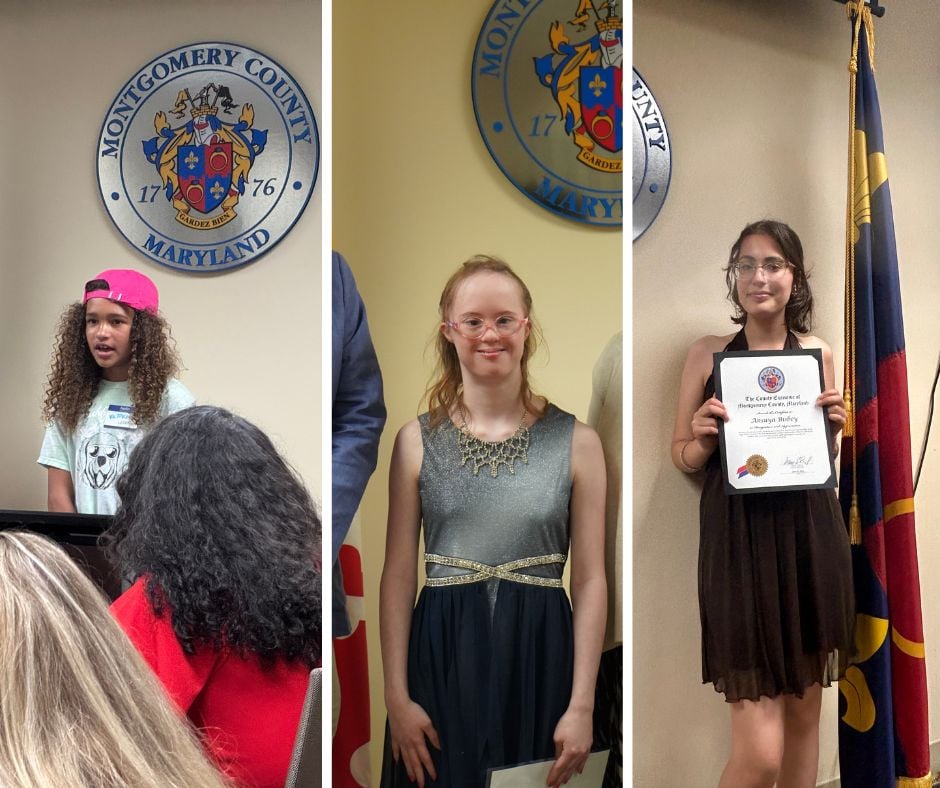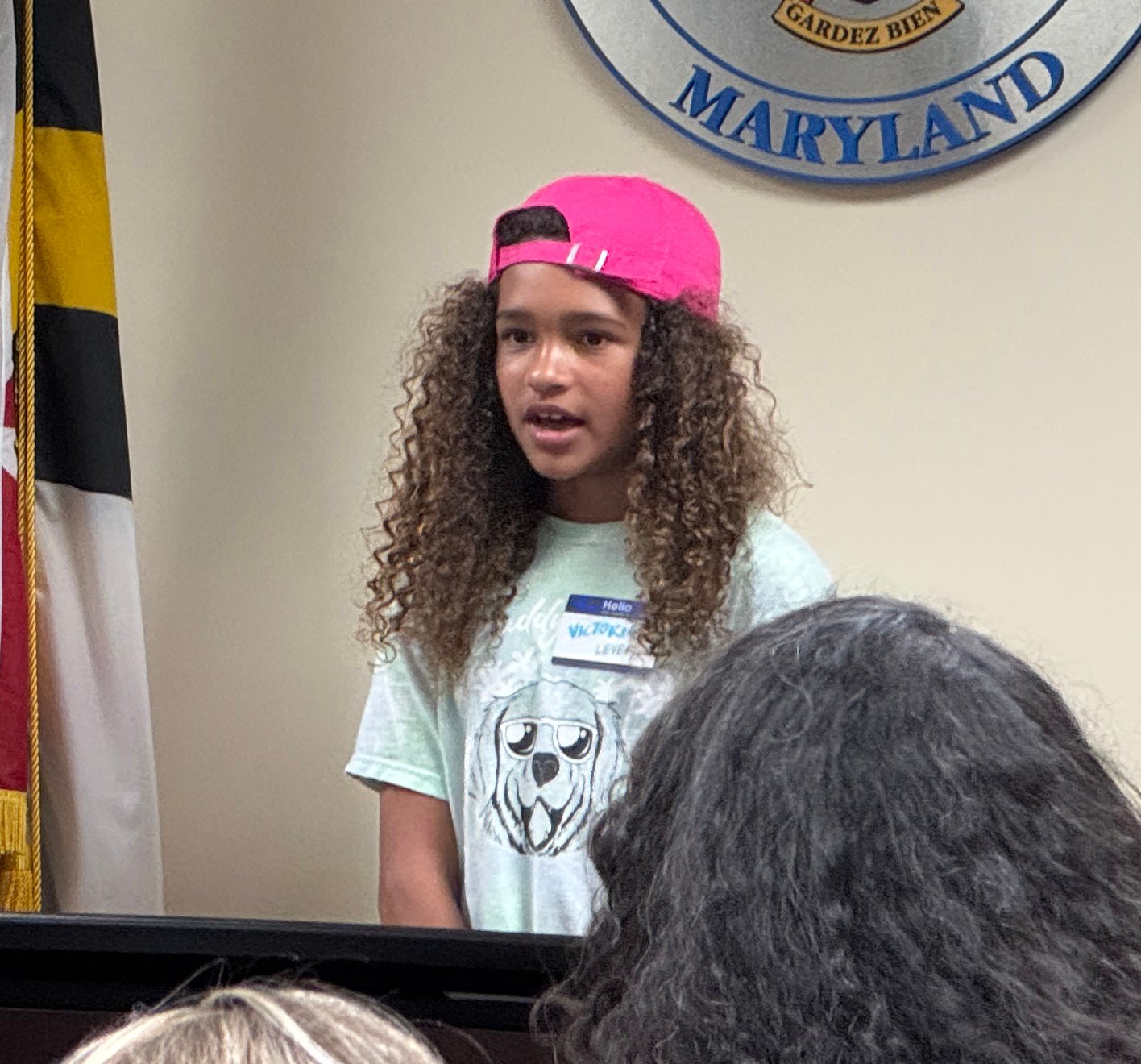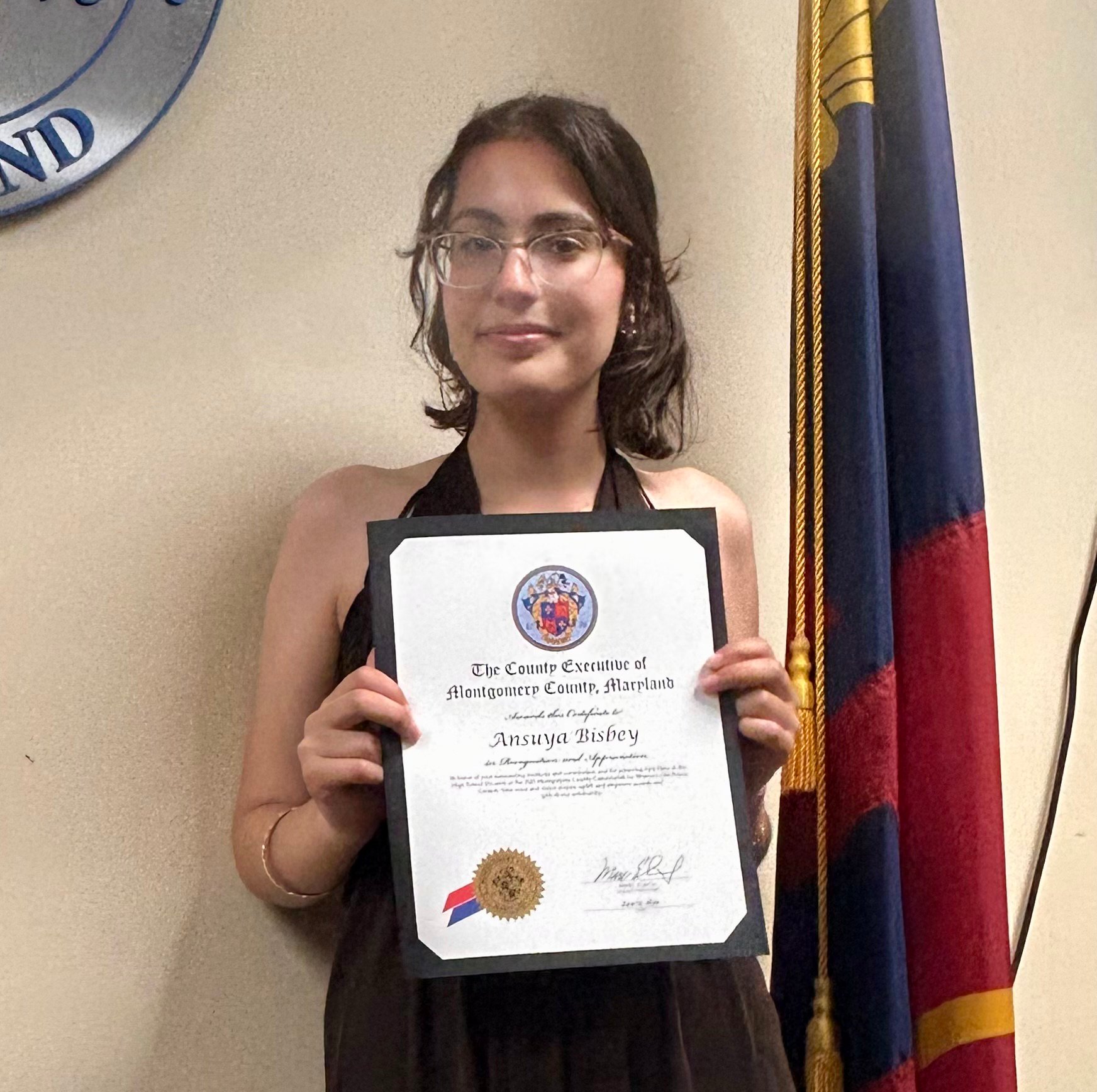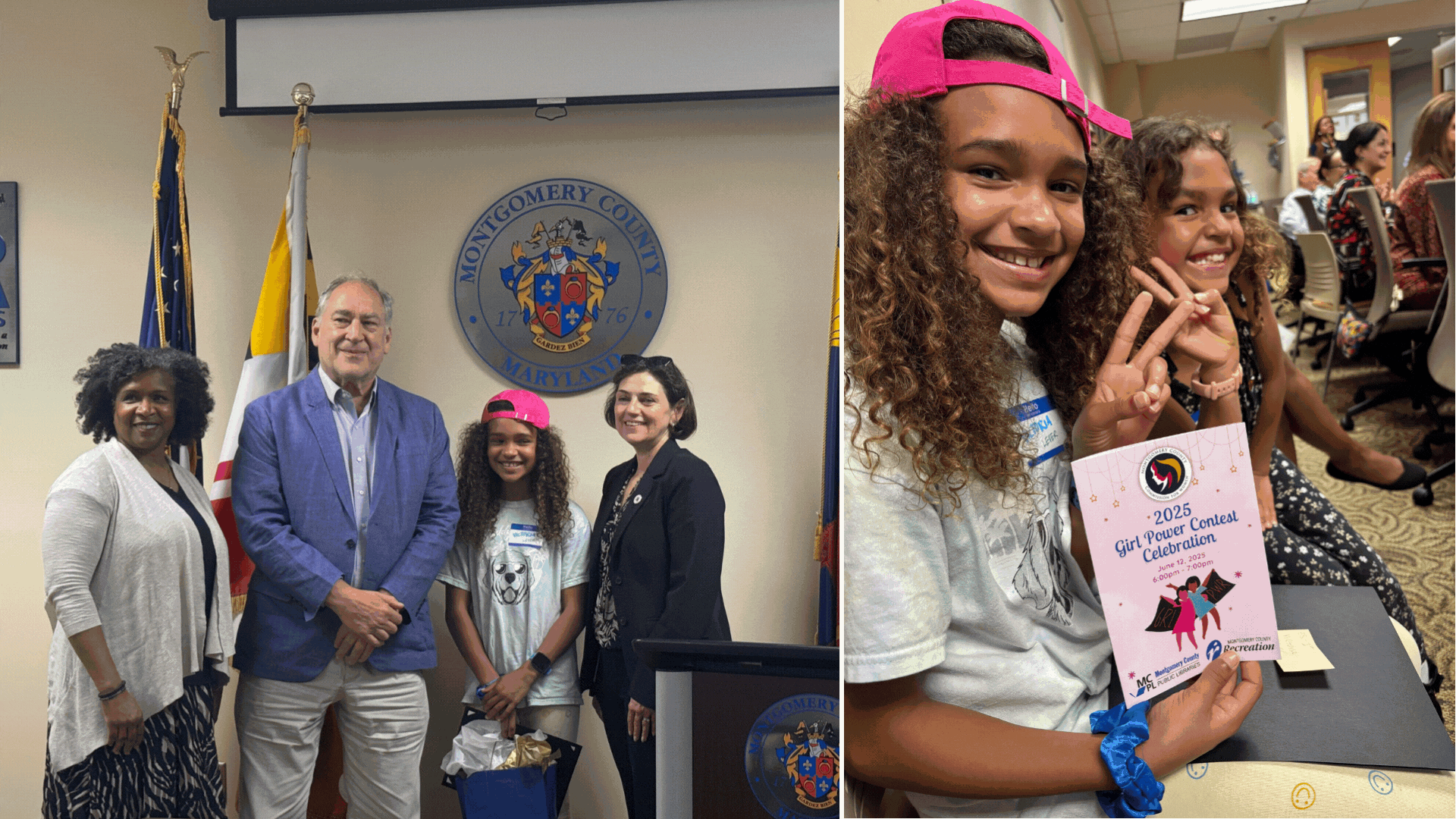2025 Girl Power Contest | Montgomery County Public Schools | Rockville, MD – Montgomery County Public Schools

Report on the 2025 Girl Power Contest Winners and Their Contributions to Sustainable Development Goals (SDGs)
The 2025 Girl Power Contest, sponsored by the Montgomery County Commission for Women, Montgomery County Public Libraries, and Montgomery County Recreation, celebrated inspiring media creations aimed at empowering women in the community. The contest aligns closely with several Sustainable Development Goals (SDGs), including SDG 5: Gender Equality, SDG 4: Quality Education, and SDG 10: Reduced Inequalities. Winners were selected across four categories: elementary school, middle school, high school, and adult. This report highlights the achievements of the Montgomery County Public Schools (MCPS) winners and their contributions to advancing these SDGs.
MCPS Winners and Their Empowerment Initiatives
Victoria Lever: Elementary School, First Place

Victoria Lever, a recent 5th-grade graduate from Ashburton Elementary School, created a podcast concept designed to inspire confidence and challenge stereotypes. Her work promotes SDG 5 by encouraging gender equality and empowerment from a young age.
- Media Format: Podcast centered on role models challenging stereotypes.
- Role Models Featured: Ruby Bridges, Coy Mathis, Oprah Winfrey, Malala Yousafzai.
- Objectives:
- Encourage girls to speak up and love themselves.
- Promote self-confidence and authenticity.
- SDG Alignment: Supports SDG 5 (Gender Equality) and SDG 4 (Quality Education) by fostering empowerment through storytelling and education.
Victoria’s aspiration to launch a podcast analyzing cultural narratives further emphasizes the role of media in shaping inclusive societies.
Federica Albanese: Middle School, First Place

Federica Albanese, an 8th-grade graduate from A. Mario Loiederman Middle School, produced a video that combines humor and authentic storytelling to inspire and empower others. Her initiative supports SDG 5 and SDG 10 by promoting inclusivity and resilience.
- Media Format: Inspirational video shared on her YouTube channel “RikaMcLaugh.”
- Key Themes:
- Overcoming challenges creatively.
- Using humor to connect and empower.
- Encouraging belief in dreams and persistence.
- Support System: Family and teachers providing encouragement and guidance.
- SDG Alignment: Advances SDG 5 (Gender Equality), SDG 10 (Reduced Inequalities), and SDG 4 (Quality Education) through media literacy and empowerment.
Federica’s message reinforces the importance of creative expression and resilience in achieving gender equality and social inclusion.
Ansuya Bisbey: High School, First Place

Ansuya Bisbey, a rising senior at Richard Montgomery High School, developed a cooking and baking show featuring diverse guests sharing their stories. Her work strongly advocates for SDG 5 and SDG 16 (Peace, Justice and Strong Institutions) by emphasizing representation and education.
- Media Format: Cooking show integrating storytelling and cultural exchange.
- Advocacy Focus:
- Gender advocacy and representation in media.
- Empowerment through education and normalized inclusion.
- Highlighting barriers faced by women and marginalized groups.
- Role Models: Ruth Bader Ginsburg, Deja Foxx.
- SDG Alignment: Supports SDG 5 (Gender Equality), SDG 4 (Quality Education), and SDG 16 (Peace, Justice and Strong Institutions) by promoting inclusive representation and dialogue.
Ansuya’s commitment to ongoing conversations about gender equality beyond symbolic observances reflects a sustainable approach to social change.
Common Themes and SDG Impact
Despite their unique approaches, all three winners share a commitment to:
- Uplifting others and promoting empowerment (SDG 5).
- Challenging stereotypes and fostering inclusivity (SDG 10).
- Using education and media as tools for social change (SDG 4).
- Encouraging ongoing dialogue on gender equality in everyday contexts.
These initiatives contribute to building a more equitable and inclusive society, directly supporting the United Nations’ Sustainable Development Goals.
Additional Resources
For detailed insights, the winners’ full contest entries are available here.

1. Sustainable Development Goals (SDGs) Addressed or Connected
- SDG 4: Quality Education
- The article highlights education through the involvement of students from elementary to high school levels participating in a contest that promotes learning, creativity, and empowerment.
- SDG 5: Gender Equality
- The core theme of the article is empowering women and girls, challenging stereotypes, and promoting gender equality through media and advocacy.
- SDG 10: Reduced Inequalities
- By addressing barriers faced by women and promoting inclusion and representation in media and society, the article touches on reducing inequalities.
- SDG 16: Peace, Justice and Strong Institutions
- Through advocacy for human rights and representation, especially by Ansuya Bisbey’s interest in international relations and human rights, the article connects to this goal.
2. Specific Targets Under Those SDGs Identified
- SDG 4: Quality Education
- Target 4.7: Ensure that all learners acquire knowledge and skills needed to promote sustainable development, including gender equality and human rights.
- SDG 5: Gender Equality
- Target 5.1: End all forms of discrimination against all women and girls everywhere.
- Target 5.5: Ensure women’s full and effective participation and equal opportunities for leadership at all levels of decision-making in political, economic and public life.
- Target 5.b: Enhance the use of enabling technology to promote the empowerment of women.
- SDG 10: Reduced Inequalities
- Target 10.3: Ensure equal opportunity and reduce inequalities of outcome, including by eliminating discriminatory laws, policies and practices.
- SDG 16: Peace, Justice and Strong Institutions
- Target 16.7: Ensure responsive, inclusive, participatory and representative decision-making at all levels.
3. Indicators Mentioned or Implied to Measure Progress
- SDG 4 Indicators
- Indicator 4.7.1: Extent to which (i) global citizenship education and (ii) education for sustainable development are mainstreamed at all levels in national education policies, curricula, teacher education and student assessment.
- Implied through the educational contest promoting empowerment and learning.
- SDG 5 Indicators
- Indicator 5.1.1: Whether or not legal frameworks are in place to promote, enforce and monitor equality and non-discrimination on the basis of sex.
- Indicator 5.5.1: Proportion of seats held by women in national parliaments and local governments (implied by advocacy for leadership and representation).
- Indicator 5.b.1: Proportion of individuals who own a mobile telephone, by sex (implied by use of media and technology for empowerment).
- SDG 10 Indicators
- Indicator 10.3.1: Proportion of population reporting discrimination or harassment (implied by addressing barriers and stereotypes).
- SDG 16 Indicators
- Indicator 16.7.2: Proportion of population who believe decision-making is inclusive and responsive (implied by advocacy for representation and inclusion).
4. Table of SDGs, Targets and Indicators
| SDGs | Targets | Indicators |
|---|---|---|
| SDG 4: Quality Education | 4.7: Ensure learners acquire knowledge and skills for sustainable development, including gender equality and human rights. | 4.7.1: Extent of mainstreaming global citizenship education and education for sustainable development in policies and curricula. |
| SDG 5: Gender Equality |
|
|
| SDG 10: Reduced Inequalities | 10.3: Ensure equal opportunity and reduce inequalities of outcome. | 10.3.1: Proportion reporting discrimination or harassment. |
| SDG 16: Peace, Justice and Strong Institutions | 16.7: Ensure inclusive, participatory and representative decision-making. | 16.7.2: Proportion believing decision-making is inclusive and responsive. |
Source: montgomeryschoolsmd.org








